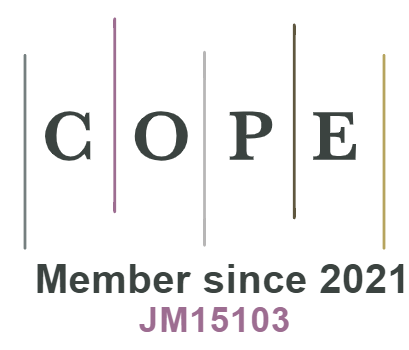Citation Guide
GUIDELINES FOR AUTHORS ON THE FORMATTING OF BIBLIOGRAPHIC FOOTNOTES AND BIBLIOGRAPHIES
DOI
When creating bibliographic addresses, DOI numbers (electronic document identifiers) should be included where possible. DOI numbers can be checked using a free tool: https://doi.crossref.org/simpleTextQuery
To find the identifiers, paste the bibliography in its entirety and end each item with enter. You will get a bibliography with suggested DOIs. If they are correct (they need to be verified), just copy and paste them into the article. DOI numbers should be added to the end of the bibliographic address, e.g:
Martin, R. (1992). “Hesiod’s Metanastic Poetics”. Ramus 21 (1). 11-33. https://doi.org/10.1017/S0048671X00002654
Bert, W. (1997). The Reluctant Superpower. United States' Policy in Bosnia, 1991-95. Basingstoke: Palgrave Macmillan. https://doi.org/10.1057/9780230372764
NOTES AND BIBLIOGRAPHY
Notes and bibliography should follow the HARVARD standard of citation.
BIBLIOGRAPHY
Articles should be accompanied by a bibliography. The bibliographic entries should be arranged in alphabetical order. Only texts referred to in footnotes (footnotes and bibliography) should be included in the bibliography.
EXAMPLES OF BIBLIOGRAPHIC ENTRIES
EDITION OF THE CLASSICAL TEXT
Euripides. (1902). Fabulae. G. Murray (ed.). Vol. I. Oxford: Clarendon Press.
Homerus. (1920). Ilias. D.B. Munro; T.W. Allen (ed.). Vol. 1-2. Oxford: Clarendon Press.
BOOK WITH NO AUTHOR
Oxford Dictionary of the Renaissance. Oxford UP, 2003.
BOOK WITH ONE AUTHOR
Smith, J. (2012). Philosophy. New York: Oxford University Press.
Kowalski, J. (1999). Filozofia. Warszawa: PWN.
Bronowska, K. (2009). Subkultury destrukcji. Studium metodologiczno-kryminalistyczne. Szczecin: PrintGroup.
BOOK WITH TWO OR MORE AUTHORS
Borgeaud, Ph.; Pirenne-Delforge V. (2008). Opera inedita. Essai sur la religion grecque. Recherches sur les Hymnes orphiques. Liège: Centre International d’Étude de la religion Grecque Antique.
Vermaat, M. et al. (2014). Discovering computers. Boston: Cengage Learning.
BOOK CHAPTER / SECTION
1. BOOK CHAPTER IN POLISH:
Lewandowski, R. (2008). W poszukiwaniu obiektywnych metod pomiaru jakości usług medycznych. W: R. Lewandowski (red.). Współczesne wyzwania strukturalne i menedżerskie w ochronie zdrowia. Olsztyn: Wydawnictwo Uniwersytetu Warmińsko-Mazurskiego. 253–266.
2. BOOK CHAPTER IN IN OTHER LANGUAGE THAN POLISH:
Dressler, L. (2015). Greek Army. In: L. Matheson (ed.). Greek History. Boston: Jacobson Ltd. 78-92.
Plácido, D. (1990). Le vie di Ercole nell´estremo Occidente. In: A. Mastronique (ed.). Ercole in Occidente. Atti del colloquio internazionale, Trento 7 marzo 1990. Trento: Università degli studi di Trento. 63–80.
Bauer, F. (1965). Antinazistische Prozesse und politisches Bewusstsein. In: Huss, H.; Schröder, A. (ed.). Antisemitismus. Zur Pathologie der bürgerlichen Gesellschaft. Frankfurt am Main: Europäische Verlagsanstalt. 168–188.
TRANSLATED WORK
1. IN POLISH:
Speer, A. (1990). Wspomnienia. Przeł. M. Fijałkowski. Warszawa: Wydawnictwo Ministerstwa Obrony Narodowej.
2. IN OTHER LANGUAGE THAN POLISH:
Lindgren, A. (2016). War Diaries 1939-1945. Trans. S. Death. New Haven: Yale University Press.
3. TRANSLATION OF CLASSICAL TEXT
Ammianus Marcellinus. (1950). History. Vol. I. Trans. J. C. Rolfe. Loeb Classical Library. Cambridge: Harvard University Press.
Ksenofont. (2014). Wychowanie Cyrusa. Przeł. i oprac. K. Głombiowski et al. Wrocław: ISKŚiO UWr.
Homer. (1999). Iliada. Przeł. K. Jeżewska. Warszawa: Prószyński i S-ka.
JOURNAL PAPERS
Camacho, P. F (2013a). ‟Gádeira, el décimo trabajo de Heracles y la política de Atenas”. Euphrosyne 41. 9-30.
Ross, N.; Kowalski, K. (2015). “On Truth Content and False Consciousness in Adorno’s Aesthetic Theory”. Philosophy Today 59/7 (2). 269-290.
Blanco Robles, F. (2019). “La recepción del mito de Hércules y Gerión en las Crónicas Medivales Hispanas”. Estudios Humanisticos. Filologia 41. 135-151. DOI: https://doi.org/10.18002/ehf.v0i41.5940
Grzelak-Krzymianowska, A. (2019). „Sugestywność etycznego przekazu prologów w poemacie Lukrecjusza”. Collectanea Philologica XXII. 85-99. DOI: https://doi.org/10.18778/1733-0319.22.05
ENCYCLOPEDIA, DICTIONARY AND LEXICON ENTRY
Słownik grecko-polski. (1958-1965). Z. Abramowiczówna (ed.). Warszawa: PWN.
Słownik łacińsko-polski (1998-1999) M. Plezia (ed.) Warszawa: PWN.
Burszta, J. (1987). „Folklor”. W: Słownik etnologiczny. Terminy ogólne. Z. Staszczak (ed.). Warszawa: PWN.
ONLINE PUBLICATIONS
1. PAPERS
Bologna. O. A. (3013). „Eufileto giustizia eratostene, seduttore della moglie”. Collectanea Philologica XVI. 79-94. https://dspace.uni.lodz.pl/xmlui/bitstream/handle/11089/3234/10-bologna.pdf?sequence=1&isAllowed=y (04.02.2023).
Modrzewska-Pianetti, I. (2022). „Amfory w ekspozycji Muzeum Archeologicznego w Murcji (Hiszpania)”. Collectanea Philologica XXV. 117-128. file:///C:/Users/CA_LTD/Downloads/1244-695-PB.pdf (04.02.2023). https://doi.org/10.18778/1733-0319.25.09
Schneider, Ch. "Die Bilanz kann nicht zufriedenstellen: Ein Gespräch mit OStA a.D. Johannes Warlo". Kritische Justiz 2015/48 (3). Pp. 340–350: https://www.jstor.org/stable/44077823 (20.01.2019).
2. FILMS
The British Library. An Evening for Salman Rushdie. 13.10.2022. YouTube: www.youtube.com/watch?v=tu1w_h23pbE&list= (05.01.2023).
Kluge, Alexander (dir). Abschied von gestern. Independent Film / Kairos Film, 1966: https://www.youtube.com/watch?v=DLhyQqA2Rjs&ab_channel=ReinerFassbinder (14.10.2020).
SOURCES IN NON-LATIN CHARACTERS
Sources written in alphabets other than Latin are transcribed in transliteration.
Averintsev, S. “Analiticheskaya psikhologiya K.G. Yunga i zakonomernosti tvorcheskoy fantazji”. Voprosy literatury 1970/3. 113-143.
NOTES
1. The HARVARD standard of citation consists of in-text parenthetical references accompanied by an alphabetical list of Works Cited supplied at the end of the text. The in-text references use the author-date-page method. For example:
(Smith 2012)
(Smith 2012: 23)
(Smith 2012a: 23) when using several works by the same author published in the same year; it is also necessary to indicate this in the bibliography
(Smith, Johns 2012: 13) in the case of two authors of the publication cited
(Smith et al. 2012: 13) in the case of three or more authors of the publication cited
(Euripides 1923) when indicating original text or translation of the source text
(West 1983; Martínez 2008) when referring to more than one publication
(Abramowiczówna 1958; s.v. γυνή) when quoting dictionary entries
(Plezia 1998; s.v. brevitas) when quoting dictionary entries
(cf. Czerwińska 2009: 123) when referring to a bibliographic entry
2. FOOTNOTES:
Footnotes should be used when commenting on a highlighted place in an article.







